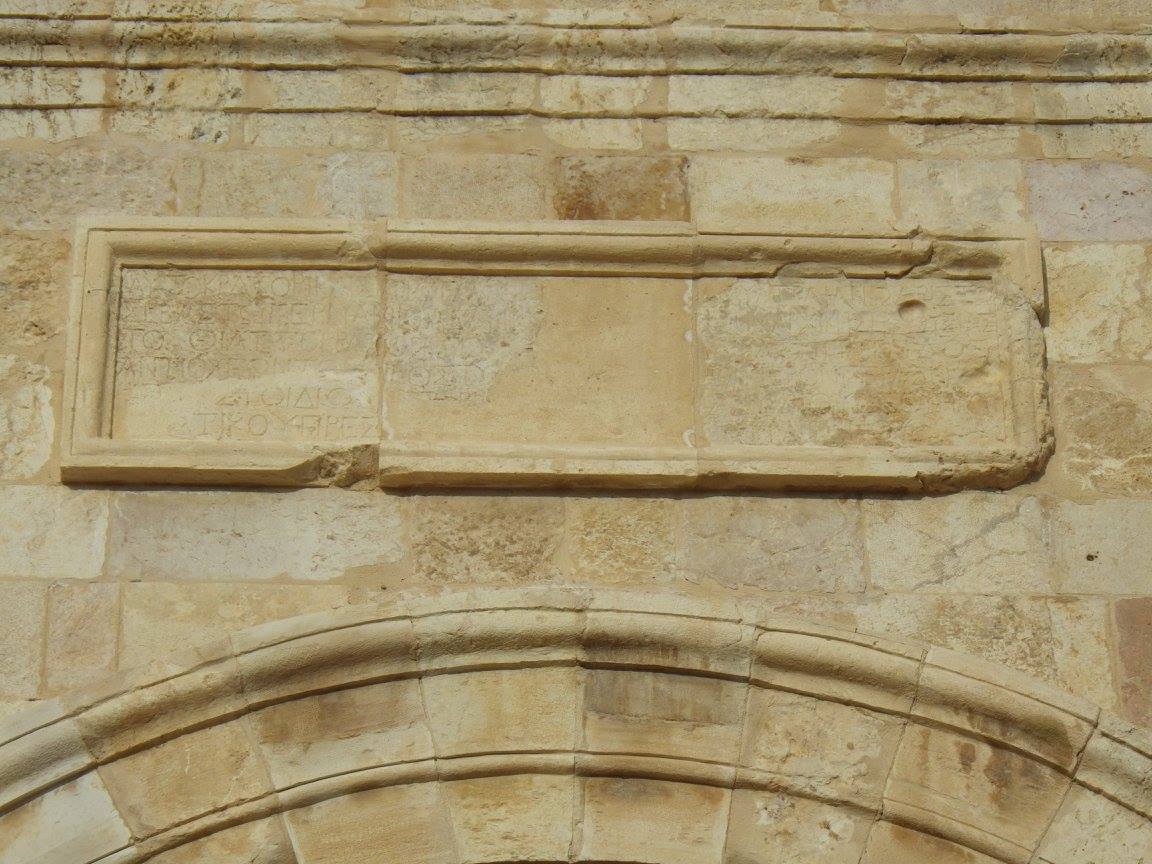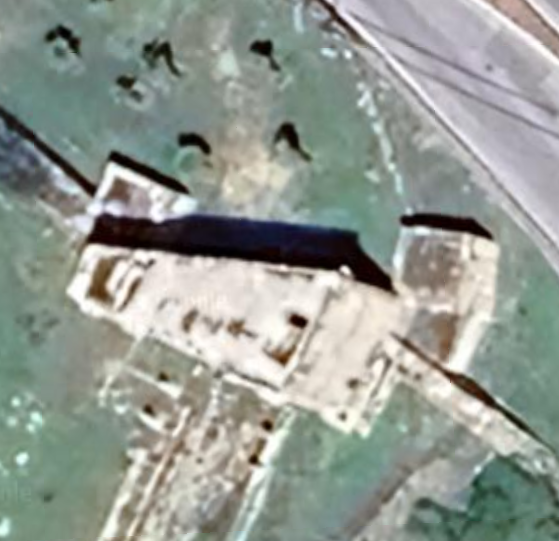Jerash - North Gate
 Dedicatory inscription on the reconstructed North Gate of Jerash
Dedicatory inscription on the reconstructed North Gate of Jerashphoto by Jefferson Williams
ChatGPT Introduction
- from Chat GPT 4o, 22 June 2025
- sources: Wikipedia (Jerash)
The gate's architecture consists of a single broad passage flanked by two rectangular towers. Though less elaborate than the triple-arched Hadrian’s Arch, the North Gate nonetheless reflects Roman military and civic architecture. Its alignment with the Cardo Maximus underscores its role in controlling and channelling movement through the city.
Although portions of the superstructure have collapsed, portions of the towers and stone foundations remain in situ. The gate offers a glimpse of Jerash’s defensive perimeter and its interaction with regional road networks. Archaeological excavations and reconstructions have clarified its plan and function, and it remains one of the lesser-visited but strategically important landmarks in Jerash’s cityscape.
Jerash - Introduction Webpage
- from Jerash - Introduction - click link to open new tab
Aerial Views, Plans, and Drawings
Aerial Views
Plans and Drawings
- General Plan of Jerash
from Wikipedia
- Plate XIX - Drawing of a Restored
North Gate from Kraeling (1938)

 Plate XIX
Plate XIX
North Gate, South Elevation, Restored
A.H. Detweiler
Kraeling et al (1938) - Plate XVII - Plan of the North Gate
from Kraeling (1938)

 Plate XVII
Plate XVII
North Gate, Plan
A.H. Detweiler
Kraeling et al (1938)
Dedicatory Inscription Earthquake (?) - Early 2nd century CE
Discussion
Description of the Inscription
 Plate CIII a.
Plate CIII a.56/57 (115 A.D.)
Kraeling et al (1938)
5. The North Gate
56/57. Six fragments (one in two pieces) of the dedicatory inscription of the North Gate, which was inscribed on twin panels on the northern and southern faces of the gate above the arch. The panels were 2.92 m. x 0.72 m. in the recessed portion. As the inscriptions were identical, a composite text is given here. A and B came from the southern face, C, D, E, and F (the underlined parts of B) from the northern. Monumental alphabet, letters 0.075-0.09 m., interval 0.04 m. Ph., sq. (of A, B, C, D). PI. CIII, a.
A. D. 115.
Abel, RB, XXXVI, 1927, pp. 250-252, no. 1 (A, B) [AE, 1927, no. 147; SEG, VII, no. 844]
Stinespring, BASOR, 54, April 1934, pp. 21-24, fig. 15 (C, D, F).
 Greek Text of Inscription from North Gate
Greek Text of Inscription from North GateKraeling et al (1938)
Trajan's 19th tribunicia potestas began December 10, 114, and his 9th acclamation as imperator belongs to the early part of the following year. If he was really called κτίστην here (the restoration of Abel), the reference must have been to a new constitution or other favors granted to Gerasa, of which nothing is otherwise known. The city cannot have become a colony until the third century (179, 191), for the inscriptions would not have been silent concerning this distinction. The term κτίστην could hardly have been used of Trajan as the founder of the province of Arabia (about A.D. 105), as Abel suggests. For C. Claudius Severus (also in 252-257) cf. PIR, II2, pp. 246 f., no. 1023.
References
Excavation Reports
Kraeling, C. (1938) Gerasa: City of the Decapolis, American Schools of Oriental Research. - can be borrowed with a free account at archive.org
Kraeling, C. (1938) Gerasa: City of the Decapolis, American Schools of Oriental Research. - open access at Hathi Trust

